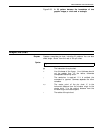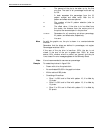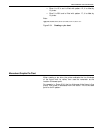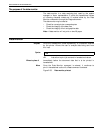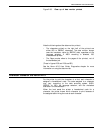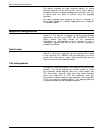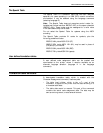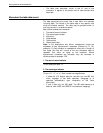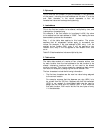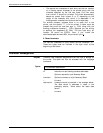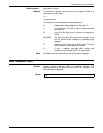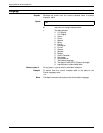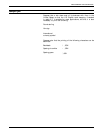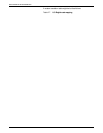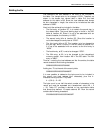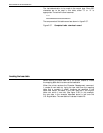
XES COMMAND LANGUAGE MODE
3. Byte count
This is one half the number of bytes (characters) in the remainder
of the record, including the load address and the two “F”s at the
end. Each character in the record represents a four bit
hexadecimal value and is always two bytes long.
4. Load address
This is the first hex location to be altered, multiplied by two, and
is always four characters long.
For example, if the first location to be altered is 40H, the value
to be entered as the load address is “0080”. Two leading 0s have
been added to produce four characters.
Entry 1 of the table data applies to this location. The printer
assumes that all subsequent entries apply to successive hex
values. For example, if the load address is 5BH, entry 1 will be
applied to hex location 5BH, entry 2 will be applied to hex
location 5CH, entry 3 will be applied to hex location 5DH, and
so on.
Table D-8 lists hexadecimal values multiplied by two.
5. Table entries
The table data consists of a series of four character entries, one
for each location from the load address to the last location to be
altered. Intervening locations which do not need to be altered
must be included. This is done simply by reassigning their normal
hex value; for example, by assigning 7BH to hex location 7BH.
The four characters include the following information:
• The first two characters are the new hex value being assigned
to the current location.
For example, suppose that the Japanese yen sign (A5H) is to
be printed from an ISO font. Suppose also that the backslash
(5CH) is not needed. A downloaded table can be used to
assign the hex value A5H to location 5CH. If 5CH were the
first table location, A5H would be the first two bytes of entry
1 in the table data.
XEROX 4213 LASER PRINTER PROGRAMMER REFERENCE 2-111



